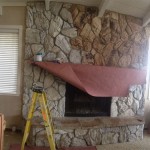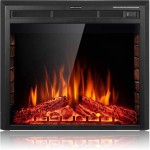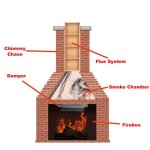Best Tile For Fireplace Hearth: A Comprehensive Guide
The fireplace hearth, the non-combustible flooring area extending in front of a fireplace, serves both functional and aesthetic purposes. It is a crucial safety feature, protecting surrounding flooring and combustible materials from sparks and embers. Moreover, the hearth contributes significantly to the overall design and character of a room. Selecting the appropriate tile for a fireplace hearth requires careful consideration of various factors, including heat resistance, durability, aesthetics, and budget. This article provides a detailed exploration of the best tile options for fireplace hearths, examining their properties, advantages, and disadvantages to aid in making an informed decision.
Understanding the Requirements for Hearth Tile
Before delving into specific tile types, it is important to understand the essential requirements for hearth tile. The primary function of a hearth is to provide a fire-resistant barrier. Therefore, the chosen tile must be able to withstand high temperatures without cracking, discoloring, or otherwise degrading. Building codes often specify minimum hearth dimensions and material standards, which should always be consulted and adhered to. Furthermore, the tile should be durable enough to withstand regular foot traffic and the occasional impact from fireplace tools or logs. Finally, the tile’s surface should be relatively easy to clean, as hearths are prone to accumulating soot, ash, and other debris.
The fire rating and thermal conductivity of the tile are paramount. Tiles with a high fire rating indicate they can withstand extreme heat without structural damage. Thermal conductivity refers to the tile's ability to conduct heat; a low thermal conductivity is ideal, as it prevents the heat from transferring to the subfloor and surrounding materials. Porosity is another crucial factor. Highly porous tiles can absorb moisture and subsequently crack or crumble when exposed to high temperatures and freeze-thaw cycles, particularly in unheated spaces. A dense, non-porous tile is therefore preferable.
Popular Tile Options for Fireplace Hearths
Several tile materials are well-suited for fireplace hearth applications, each offering unique characteristics and aesthetic appeal. These include ceramic, porcelain, natural stone (such as granite, slate, and travertine), and concrete tiles. The suitability of each material depends on the specific style of the fireplace, the overall design of the room, and the homeowner's preferences and budget.
Ceramic Tile: Ceramic tile is a widely used and cost-effective option for hearths. It is available in a vast array of colors, patterns, and sizes, offering considerable design flexibility. Ceramic tile is relatively easy to install and maintain. However, standard ceramic tile may not be the best choice for high-heat applications. Its lower density compared to porcelain makes it more susceptible to cracking under extreme temperature fluctuations. It is essential to select ceramic tile specifically rated for fireplace use or consider using it in conjunction with a non-combustible subfloor.
Porcelain Tile: Porcelain tile is a superior choice compared to ceramic tile for fireplace hearths due to its greater density and lower porosity. It is manufactured at higher temperatures, resulting in a harder, more durable product that is highly resistant to heat, stains, and scratches. Porcelain tile is available in glazed and unglazed varieties, each with its own benefits. Glazed porcelain is easier to clean, while unglazed porcelain offers a more natural, textured look. Porcelain tiles often mimic the appearance of natural stone, offering a cost-effective alternative.
Natural Stone Tile: Natural stone tiles, such as granite, slate, and travertine, provide a timeless and elegant look for fireplace hearths. Each type of stone offers unique characteristics in terms of color, texture, and veining. Granite is known for its exceptional durability and heat resistance, making it a suitable choice for high-heat environments. Slate offers a rustic and textured appearance, adding warmth and character to a room. Travertine, with its distinctive pitted surface, provides a classic and sophisticated look. However, natural stone tiles generally require sealing to protect them from stains and moisture absorption. Some natural stones, particularly those with high iron content, may discolor or crack under extreme heat.
Concrete Tile: Concrete tiles are gaining popularity for fireplace hearths due to their modern and industrial aesthetic. They are incredibly durable and heat-resistant, making them a practical choice for high-heat applications. Concrete tiles can be cast in various shapes, sizes, and colors, offering design flexibility. However, concrete tiles are generally heavier than other tile types, requiring a robust subfloor for support. They also tend to be more porous than porcelain or granite and require regular sealing to maintain their appearance and prevent staining.
Factors to Consider When Selecting Hearth Tile
Beyond the material type, several other factors should be considered when selecting tile for a fireplace hearth. These include the tile's size, shape, color, texture, and overall design. The size of the tile should be proportionate to the size of the fireplace and the surrounding room. Larger tiles can create a more expansive and seamless look, while smaller tiles can add visual interest and detail. The shape of the tile can also influence the overall aesthetic. Common shapes include square, rectangular, and hexagonal, but more unconventional shapes can also be used to create a unique design.
The color and texture of the tile should complement the style of the fireplace and the overall décor of the room. Neutral colors, such as beige, gray, and white, are versatile and can blend well with various design schemes. Darker colors can add drama and sophistication, while lighter colors can create a brighter and more airy feel. The texture of the tile can also impact the overall look and feel of the hearth. Smooth tiles offer a sleek and modern appearance, while textured tiles can add warmth and character.
The installation process is also a crucial consideration. Proper installation ensures the tile performs its function effectively and aesthetically. It is often recommended to hire a professional tile installer to ensure the job is done correctly. The installer will assess the subfloor, prepare the surface, and install the tile using appropriate adhesives and grouting techniques. Improperly installed tile can crack, loosen, or become uneven, compromising the safety and appearance of the hearth.
Specific Property Considerations of Different Materials
Each material presents a unique set of advantages and disadvantages based on its inherent properties. Understanding these distinctions is crucial for selecting the most appropriate tile for specific needs and conditions.
Ceramic: While cost-effective and readily available in a wide range of aesthetics, ceramic tile is less heat-resistant compared to other options. It's also more porous, meaning it can absorb moisture if not properly sealed, which is a significant drawback in areas frequently exposed to spills or dampness. Consider this option if the fireplace is rarely used or primarily for decorative purposes, and always ensure a heat-resistant subfloor is in place.
Porcelain: Higher density and lower porosity than ceramic make porcelain a more durable and suitable choice for fireplace hearths. Its resistance to heat, scratches, and stains makes it a low-maintenance option. While slightly more expensive than ceramic, porcelain's longevity and performance offer a better long-term value. Porcelain is a solid choice that offers a wide range of design options.
Natural Stone: The timeless appeal of natural stone comes with considerations related to maintenance and specific stone properties. Granite excels in heat resistance and durability, while slate offers a unique texture and rustic charm. Each stone type requires sealing to prevent staining and moisture absorption. Certain stones might be more prone to discoloration or cracking under extreme heat, so research the specific variety's heat tolerance before making a selection. Natural stone commonly offers a higher initial cost.
Concrete: Concrete tile stands out for its robustness and design versatility, allowing for customized shapes, sizes, and colors. However, its inherent porosity requires consistent sealing for protection against staining and moisture. The weight of concrete tile necessitates a strong subfloor to ensure proper support and prevent cracking. While offering a modern aesthetic, concrete tile requires more careful installation due to its weight and potential for absorbing moisture.
Maintenance and Care for Hearth Tile
Regardless of the tile material chosen, proper maintenance and care are essential for preserving its appearance and extending its lifespan. Regular cleaning is necessary to remove soot, ash, and other debris. A soft brush or vacuum cleaner can be used to remove loose particles, followed by a damp mop or sponge with a mild detergent solution. Harsh chemicals and abrasive cleaners should be avoided, as they can damage the tile's surface. For natural stone tiles, it is important to use cleaners specifically designed for stone to prevent etching or discoloration.
Sealing is an important maintenance step for many tile types, particularly natural stone and concrete. Sealants create a protective barrier that prevents moisture absorption and staining. The frequency of sealing depends on the type of sealant used and the level of exposure to moisture and spills. It is generally recommended to reseal hearth tile every one to two years, or as needed.
Promptly addressing any cracks or damage to the tile is also crucial. Small cracks can often be repaired with epoxy or grout filler. However, larger cracks or damaged tiles may require replacement. Ignoring these issues can lead to further deterioration and compromise the safety and functionality of the hearth.

What Are The Best Tiles For A Fireplace Rotherham Centre

Fireplace Tile Ideas Designs To Inspire You

Choosing The Best Tiles For Your Fireplace

Fireplace Tiles Classique Floors Tile Portland Or
/102661017-6a23c040b71843379188b96b21ac1a08.jpg?strip=all)
How To Tile A Fireplace

58 Best Fireplace Tile Ideas To Transform Your Hearth Remodel Surround Design

10 Stylish Tile Options For Your Fireplace Surround

Fireplace Tiles Classique Floors Tile Portland Or

Remodeling A Fireplace With Tile

Fireplace Tiles Classique Floors Tile Portland Or
Related Posts








